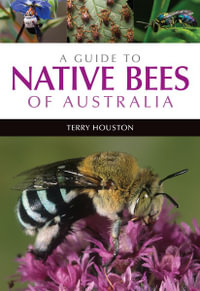Foreword: Landscapes in Peril.
1. Introduction. David B. Lindenmayer and Richard J.
Hobbs.
Section 1: Classification of Landscapes and
Terminology.
2. The Whole Elephant: Classification and Terminology as Tools
for Achieving Generality in Landscape Ecology. S.
Mcintyre.
3.Enacting Landscape Design: from Specific Cases to General
Principles. Yrjo Haila.
4. Landscape Models for Use in Studies of Landscape Change and
Habitat Fragmentation. David B. Lindenmayer and J.
Fischer.
5. Synthesis: Landscape Classification. David. B. Lindenmayer
and Richard J. Hobbs.
Section 2: Habitat, Habitat Loss, and Patch Sizes.
6. Remnant Geometry, Landscape Morphology, and Principles and
Procedures for Landscape Design. Ralph Macnally.
7. Estimating Minimum Habitat for Population Persistence.
Lenore Fahrig.
8. Habitat and Landscape Design: Concepts, Constraints, and
Opportunities. James R. Miller.
9. Synthesis: Habitat, Habitat Loss, and Patch Sizes. David
B. Lindenmayer and Richard J. Hobbs.
Section 3: Structure, Degradation, and Condition.
10. Nature?s Infinite Variety: Conservation Choice and
Management for Dynamic Ecological Systems. J.C.Z.
Woinarski.
11. The Diverse Impacts of Grazing, Fire, and Weeds: How
Ecological Theory Can Inform Conservation Management. Don A.
Driscoll.
12. Forest Landscape Structure, Degradation, and Condition: Some
Commentary and Fundamental Principles. Jerry F. Franklin and
Mark E. Swanson.
13. Synthesis: Structure, Degradation, and Condition. David
B. Lindenmayer and Richard J. Hobbs.
Section 4: Edge Effects.
14. Incorporating Edges Effects into Landscape Design and
Management. Thomas D. Sisk.
15. Edge Effects. David B. Lindenmayer and J.
Fischer.
16. Edges: Where Landscape Elements Meet. Gary W.
Luck.
17. Synthesis: Edge Effects. David B. Lindenmayer and Richard
J. Hobbs.
Section 5: Total Vegetation Cover, Pattern, Patch
Content.
18. Emergent Properties of Land Mosaics: Implications for Land
Management and Biodiversity Conservation. Andrew F. Bennett and
James Q. Radford.
19. Assessing the Biodiversity Value of Stands and Patches in a
Landscape Context. Philip Gibbons, S.V. Briggs, Andre Zerger,
Danielle Ayers, Julian Seddon, and Stuart Doyle.
20. Avoiding Irreversible Change: Considerations for Vegetation
Cover, Vegetation Structure, and Species Composition. Joern
Fischer and David B. Lindenmayer.
21. Synthesis: Total Vegetation Cover, Pattern, and Patch
Content. David. B. Lindenmayer and Richard J. Hobbs.
Section 6: Connectivity, Corridors, Stepping Stones.
22. Corridors, Connectivity, and Biological Conservation.
F.K.A. Schmiegelow.
23. Focal Species for Determining Connectivity Requirements in
Conservation Planning. Reed F. Noss.
24. Connectivity, Corridors, and Stepping Stones. Denis A.
Saunders.
25. Synthesis: Corridors, Connectivity, and Stepping Stones.
David B. Lindenmayer and Richard J. Hobbs.
Section 7: Individual Species Management - Threatened Taxa
and Invasive Species.
26. Individual Species Management: Threatened Taxa and Invasive
Species. Daniel Simberloff.
27. Managing Landscapes for Vulnerable, Invasive, and Disease
Species. Erika Zavaleta and Jae Ryan Pasari.
28. Tools for Conserving Individual Plant Species in Dynamic
Landscapes. Mark Burgman, Jane Elith, Emma Gorrod, and Bonnie
Wintle.
29. Synthesis: Individual Species Management ? Threatened
Taxa and Invasive Species. David B. Lindenmayer and Richard J.
Hobbs.
Section 8: Ecosystems and Ecosystem Processes.
30. Ecosystems, Ecosystem Processes, and Global Change:
Implications for Landscape Design. Adrian D. Manning.
31. The Costs of Losing and Restoring Ecosystem Services.
H.A. Mooney.
32. Managing Disturbance Across Scales: An Essential
Consideration for Landscape Management and Design. Viki A.
Cramer.
33. Synthesis: Ecosystems and Ecosystem Processes. David B.
Lindenmayer and Richard J. Hobbs.
Section 9: Disturbance, Resilience, and Recovery.
34. Disturbance, Resilience, and Recovery: A Resilience
Perspective On Landscape Dynamics. Brian Walker.
35. Core Principles for Using Natural Disturbance Regimes to
Inform Landscape Management. Malcolm L. Hunter Jr.
36. Synthesis: Disturbance, Resilience, and Recover. David B.
Lindenmayer and Richard J. Hobbs.
Section 10: Aquatic Ecosystems and Integrity.
37. Principles for Conserving Wetlands in Managed Landscapes.
Aram J.K. Calhoun.
38. Flowing Waters in the Landscape. P.S. Lake.
39. Water in the Landscape: the Coupling of Aquatic Ecosystems
and their Catchments. Peter Cullen.
40. Synthesis: Aquatic Ecosystems and Integrity. David B.
Lindenmayer and Richard J. Hobbs.
Section 11: Bringing It All Together.
41. Does Conservation Need Landscape Ecology? A Perspective from
Both Sides of the Divide. John A. Wiens.
42. What are We Conserving? Establishing Multiscale Conservation
Goals and Objectives in the Face of Global Threats. J. Michael
Scott and Timothy H. Tear.
43. Goals, Targets, and Priorities for Landscape-Scale
Restoration. Richard J. Hobbs.
44. A Contribution to the Development of a Conceptual Framework
for Landscape Management: A Landscape State and Transition Model.
Peter Cale.
45. Principles of Landscape Design that Emerge from a Formal
Problem-Solving Approach. Hugh P. Possingham and Emily
Nicholson.
46. From Perspective to Principles: Where to from Here?
Richard J. Hobbs and David B. Lindenmayer.
Index
























